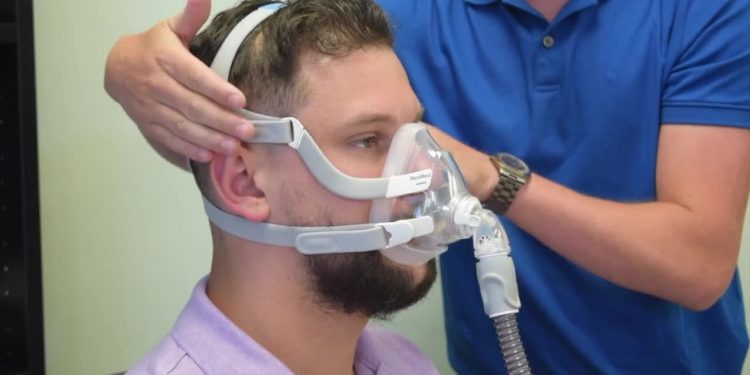Selecting a suitable mask is one of the most important decisions when starting a treatment plan that uses a device. An ill-fitting mask can lead to air leaks or discomfort that causes poor compliance. A systematic mask selector can help determine each patient’s best mask type and size.
Table of Contents
Assessing Facial Features and Sleeping Positions
The first step in finding the optimal mask is understanding a patient’s unique facial attributes and sleeping habits. This informs the mask recommendations.
Facial Features
The shape and size of a person’s nose, face width, lip area, and facial hair are vital considerations. Those with smaller noses or more narrow faces may prefer a nasal pillow or cushion style that seals around the nostrils without enclosing the entire nose. Wider faces often require a full-face style. Minimal facial hair allows for the best seal.
Sleeping Positions
It is also essential to know whether people sleep on their back, side, or stomach. Side sleepers need space for their cheeks to compress on the pillow without breaking the mask seal. Back sleeping allows for the broadest mask options. Stomach sleeping is most restrictive as only slim-profile masks allowing head turning are practical.
Combining these facial and sleep traits helps identify suitable mask types for trial. But the nuanced fit and feel can only be determined individually through temporary at-home use.
Demo Masks for Test Drives
The most effective strategy for zeroing in on the perfect match is allowing patients to take home several mask demo kits for temporary overnight testing. Kits contain sample masks with the appropriate frames, headgear, and sizing components so the setup mimics real-world usage as closely as possible.
Most patients appreciate the ability to experiment with different options in the comfort of their beds and on multiple nights before deciding. This gives them a feel for differences in comfort, seal, airflow, field of vision, noise levels, and other subtle but important factors. Patients also get practice donning, adjusting, and cleaning the equipment just as they would after purchase.
The testing period allows patients to self-determine the optimal choice based on personal comfort and preference rather than relying solely on someone else’s best guess. Patient feedback on what they liked and didn’t like further informs final recommendations.
Tailoring Recommendations
Leveraging insights from objective assessments of facial attributes and subjective feedback from extended at-home trials ensures patients get a mask ideally suited for their needs.
Matching Mask Categories
General mask recommendations usually start with either nasal, full-face, or nasal pillow categories based on nose width, face width, lip area, and whether mouth opening during sleep is an issue.
Additional shape and sizing adjustments within those categories provide further customisation for the best fit. Many masks come in different frame sizes and have interchangeable pillows, seals, forehead supports, and head straps to dial in the correct configuration.
Considering Lifestyle Factors
Lifestyle preferences also impact choices. Those wanting to read or watch TV in bed before sleep may opt for slim-profile masks with better downward vision. Frequent travellers could desire more portable options. Side sleepers often need slimmer designs to prevent face or seal compression.
Prioritising Comfort
Comfort-driven patients willing to trade some visual bulk for enhanced stability or cushioning can select masks with extra padding and supports. Customisation for glasses wearers who need additional clearance is also necessary.
Accommodating all these patient-specific needs ensures long-term adherence and positive outcomes.
Achieving Successful Compliance
The ultimate goal in selecting any medical device is supporting consistent, sustained use. An initial fitting and supply of equipment is just the first step. Ongoing compliance relies on patients wearing comfortable, convenient, and effective masks.
The mask selector process gives patients the experience and confidence that they made the right personalised choice. This empowers them to self-manage their treatments for the long run.
Key Takeaways
- A methodical mask selector approach considers facial attributes and subjective patient feedback from extended at-home trials. This ensures the best fit.
- Allowing patients to demo multiple masks for overnight home use gives them a feel for differences and preferences before final selection.
- Tailoring recommendations around comfort, vision, portability and other lifestyle factors lead to the highest long-term compliance.
- An optimal mask match means patients use their devices consistently, comfortably, and correctly for the best possible treatment outcomes.
Finding the perfect mask is a journey, not a single destination. Mask selectors like the resmed mask selector enable patients and providers to explore options guided by personalised needs collaboratively. When patients feel genuinely confident in the equipment’s fit and performance, sustained compliant use and better results follow.


 Home
Home










